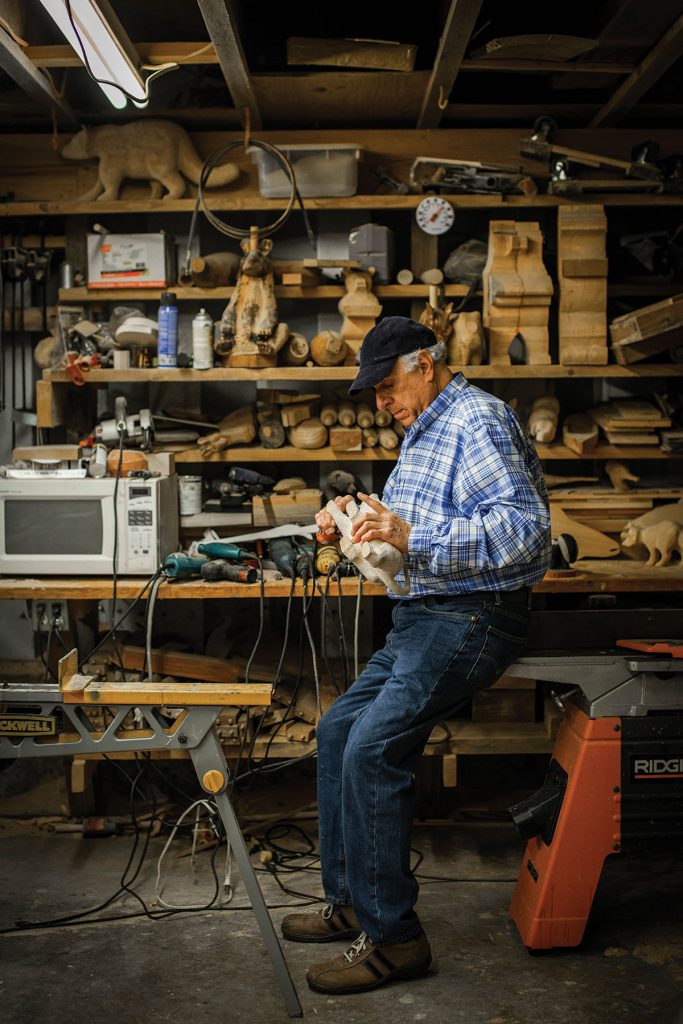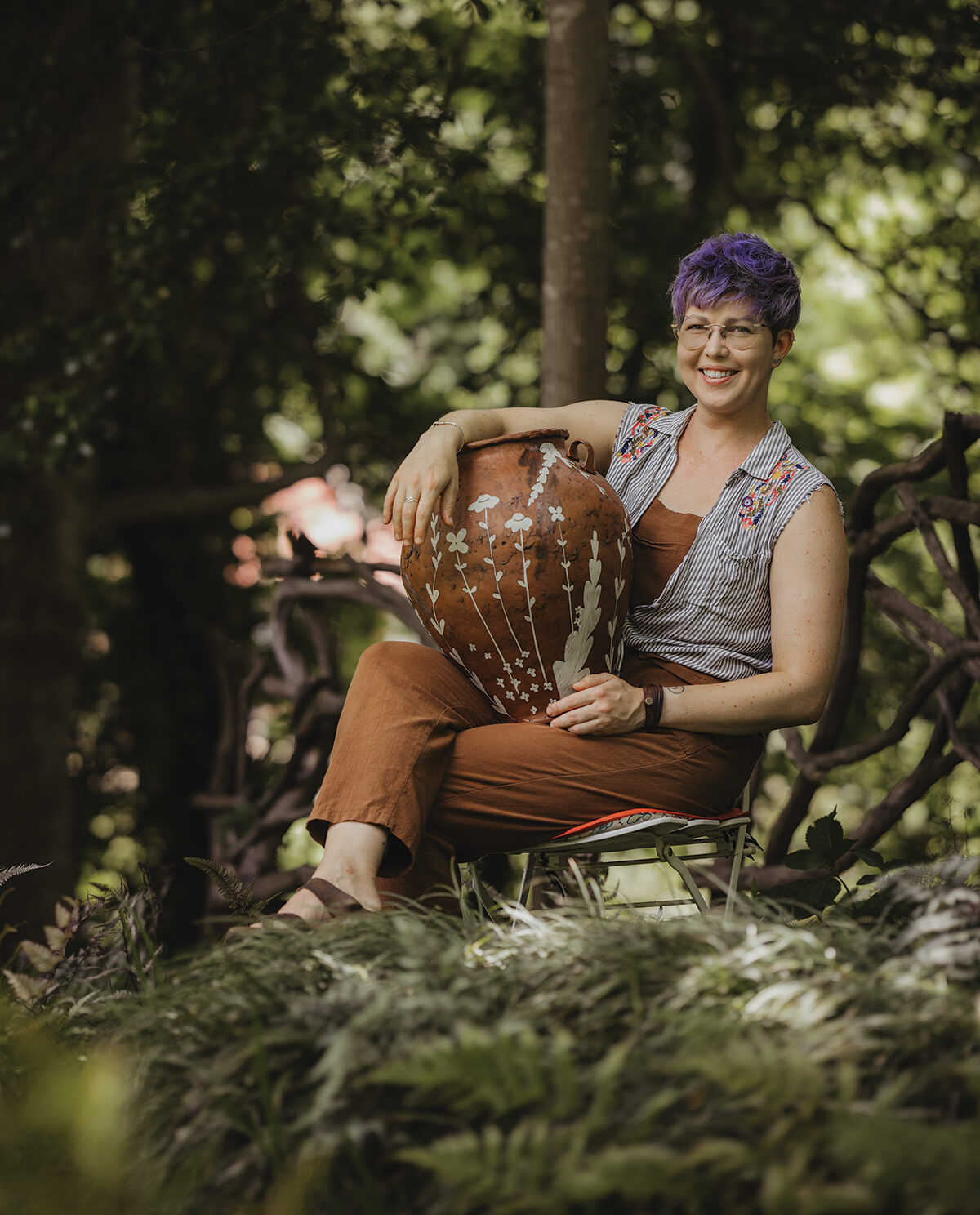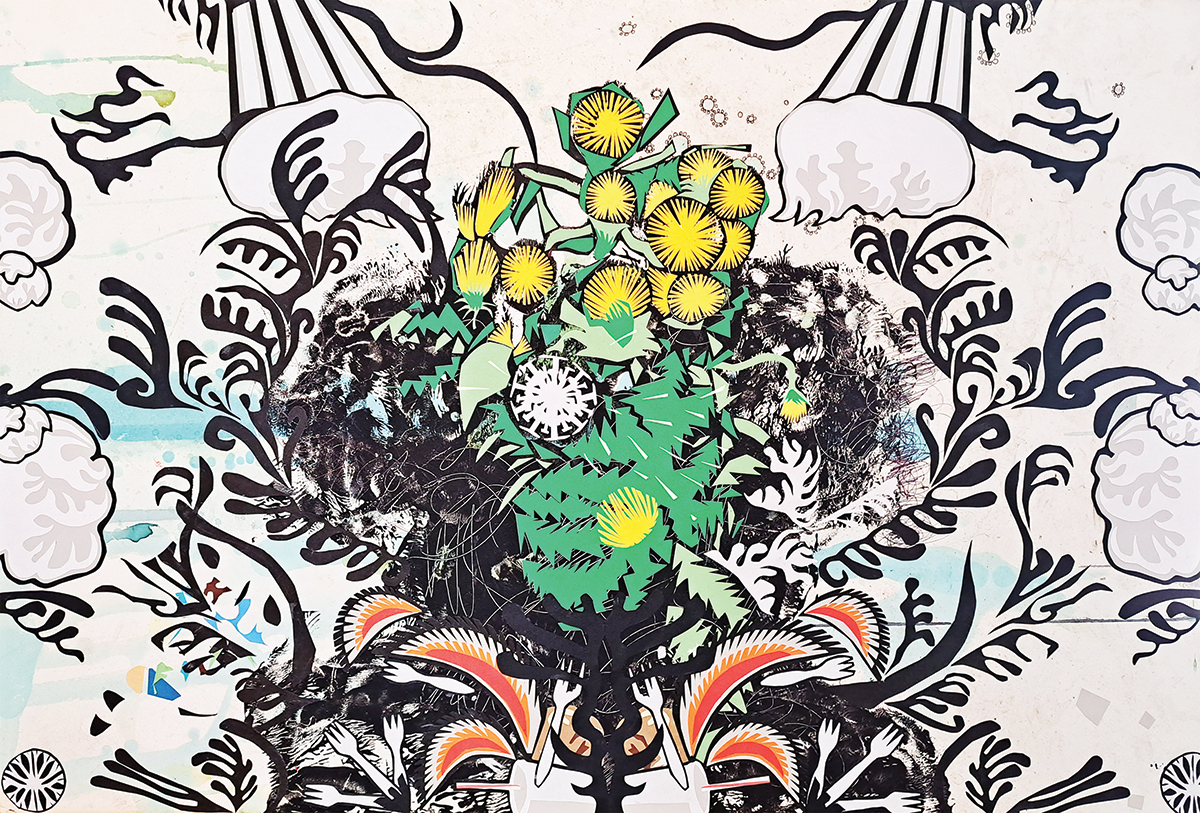Beginning carving class is a jump into the wild

Bernard Edwards is a friend to misunderstood animals.
Photo by Karin Strickland
Bernard Edwards carved his first duck decoy 40 years ago. As a young man, he took guided hunting and fishing trips on the Canadian side of Lake Erie; during these travels, Edwards learned about the history of the utilitarian woodcarvings and recognized their increasing value as collectors’ items.
He began making and building a sculptural library of reference works, now numbering in the hundreds. “But after a few years of carving decoys, my attention span dwindled,” Edwards says. His carved menagerie began to encompass birds, fish, dogs, and cats. “What a wild and enjoyable ride it’s been since,” remarks the artist.

Edwards’ repertoire includes skunks, foxes, hound dogs, rabbits … any critter you might find in the Pacolet River region. Students in his latest workshop will make thir own opossum.
Photo by Karin Strickland
Fledgling woodcarvers can take advantage of Edwards’ years of experience during this month’s “Basics of Woodcarving” workshop at Tryon Arts and Crafts School, where the subject animal will be another of his favorites, the opossum, which he considers (along with skunks) one of nature’s less-appreciated creatures. It’s part of his deep love of natural history, nurtured during his boyhood growing up in Inman, SC, and Tryon.
“I always loved outdoor life,” Edwards says. “I remember in the summertime, my buddies and I would spend the day on the Pacolet River. We fished, picked blackberries, and swam from dawn to dusk, it seemed. Blackberry cobbler is still my favorite dessert.”

Photo by Karin Strickland
Edwards is a self-taught carver, mostly working with salvaged white pine collected by neighbors and his wide circle of fellow carvers. “I often get trees after a bad windstorm comes through,” he explains. “I carry the logs to the sawmill and have them sawn into different sizes of beams. I built a small kiln and have beams curing all the time.”
He continues to produce his brightly painted, whimsical animal figures, but his body of work has recently been moving closer to the folk-art vernacular: elegantly dressed foxes, raccoons and pigs, some of them four feet tall. Edwards is also known for his annual contribution of a dog head for the prize plaques handed out at Saluda’s Coon Dog Day parade. He’s been honored as one of TACS’s Artists of the Month and as a guest artist for Tryon Painters & Sculptors.

Photo by Karin Strickland
This fall’s six-week workshop at TACS is the latest in an animal-specific series Edwards has been teaching every spring and fall. (Last spring’s subject was a hound dog.) “I love to share my knowledge with others,” he says. “It’s very satisfying to help a student who has never whittled or carved in their life take a block of wood and carve and paint a beautiful creature to take home and admire with the family. These turn out to be beautiful pieces that you never see in galleries.”
Bernard Edwards’ six-week “Basics of Carving” class meets on Tuesdays, 10am to 1pm, at Tryon Arts and Crafts School, 373 Harmon Field Road in Tryon, through Dec. 4. The cost is $160 for TACS members, $175 for nonmembers, plus a $20 materials fee. Students should expect to cooperate with the following health precautions: masks, touchless-thermometer check, health-status form, social distancing, and increased sanitation procedures. For more information, see the “Fall 2” education link on tryonartsandcrafts.org.



